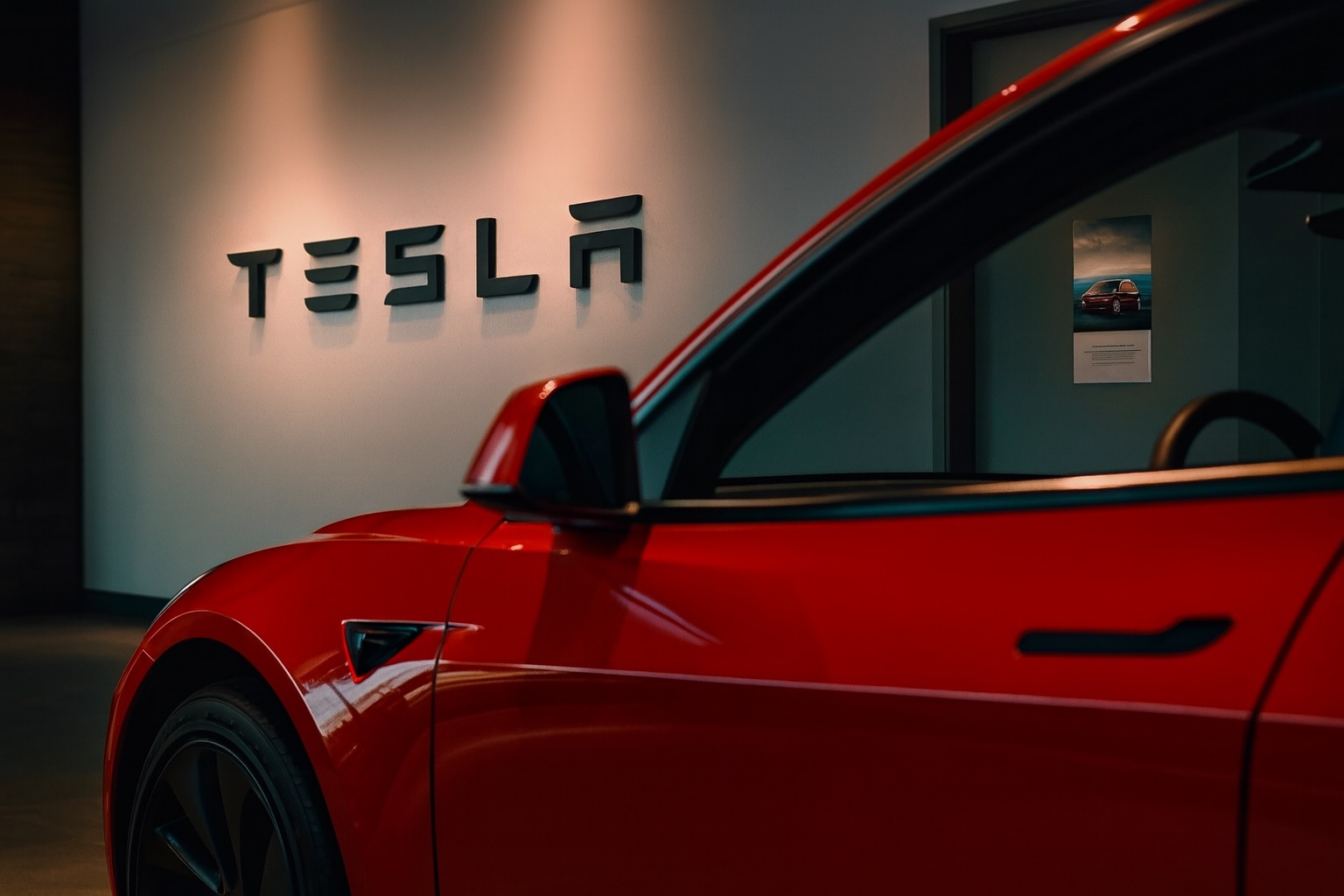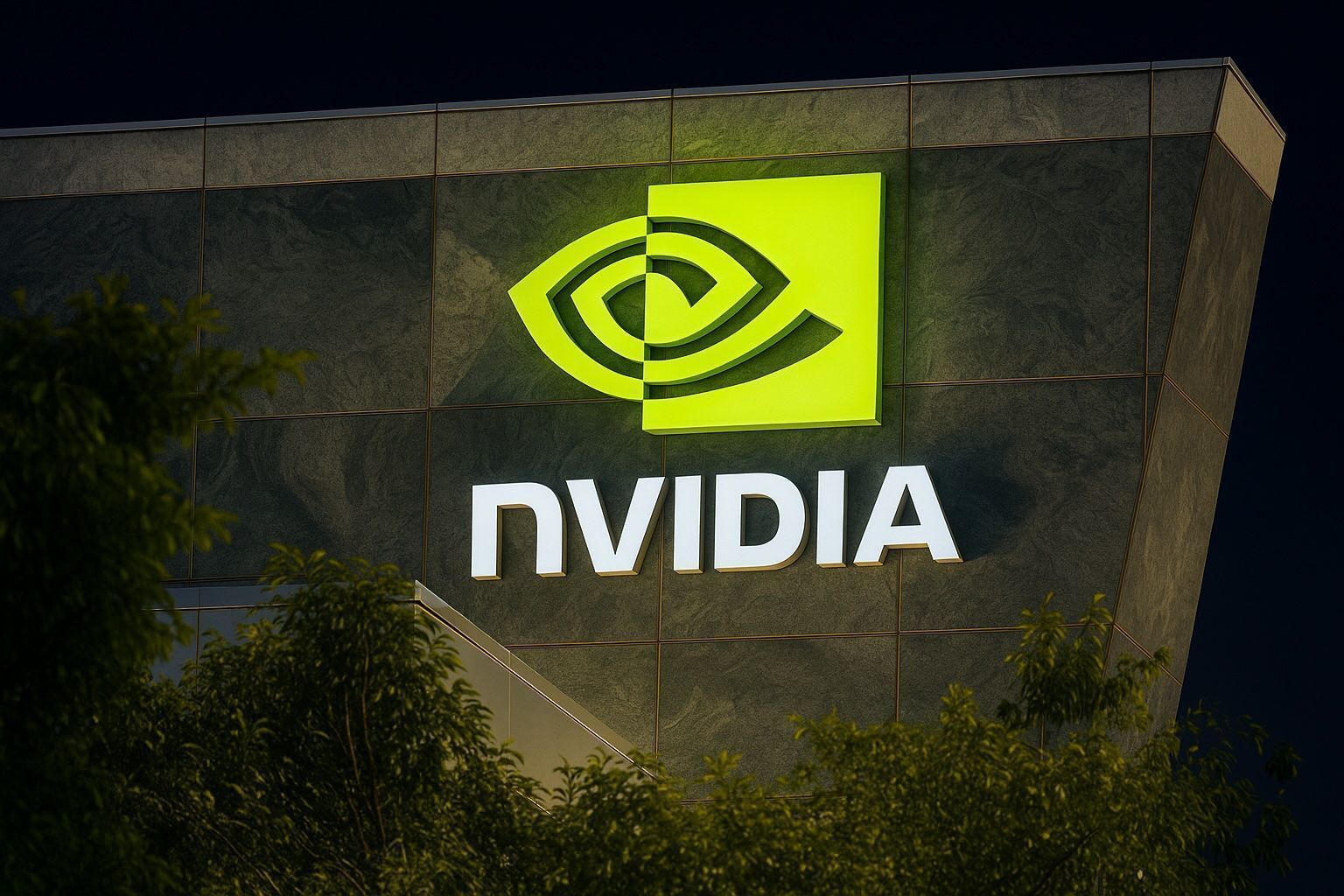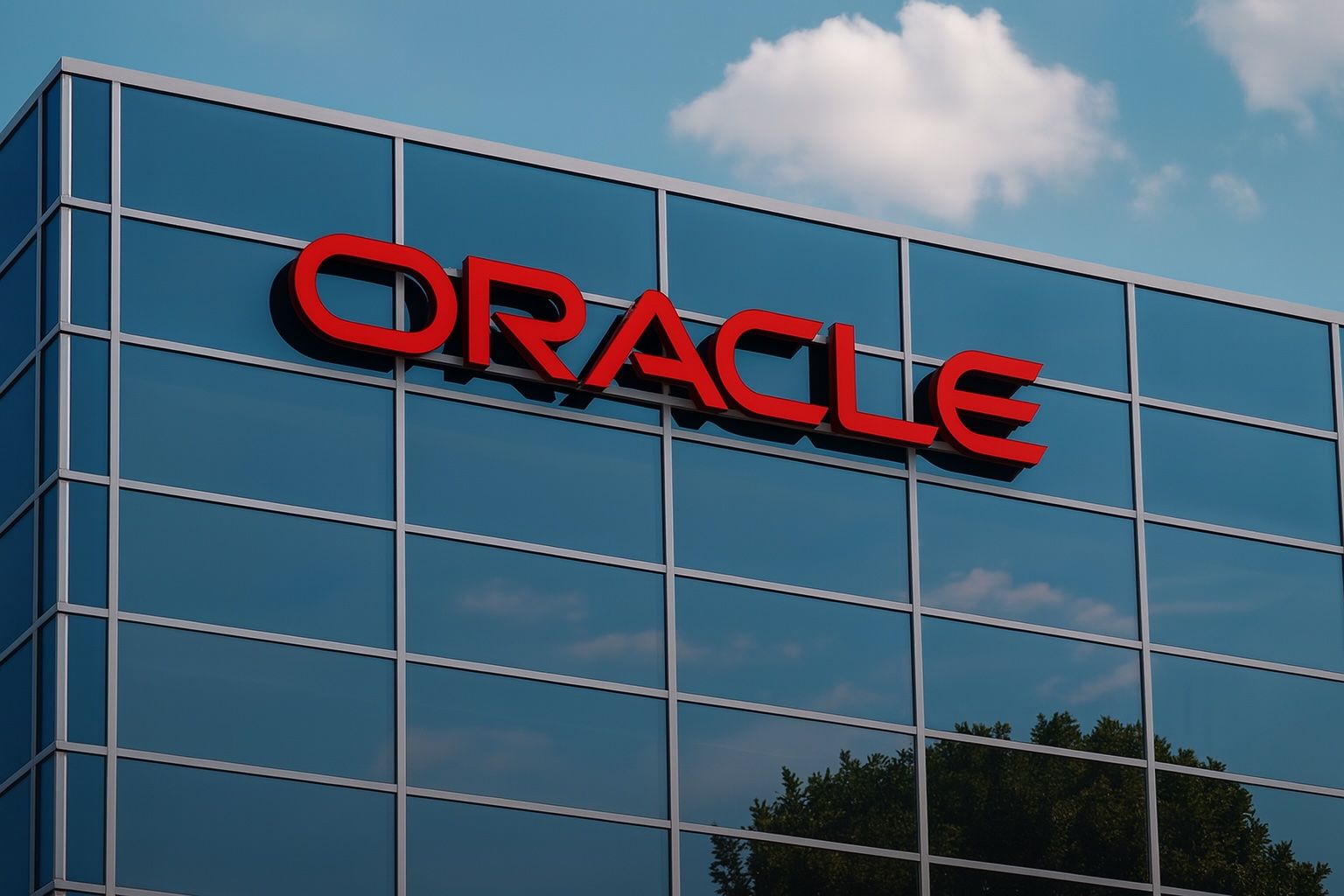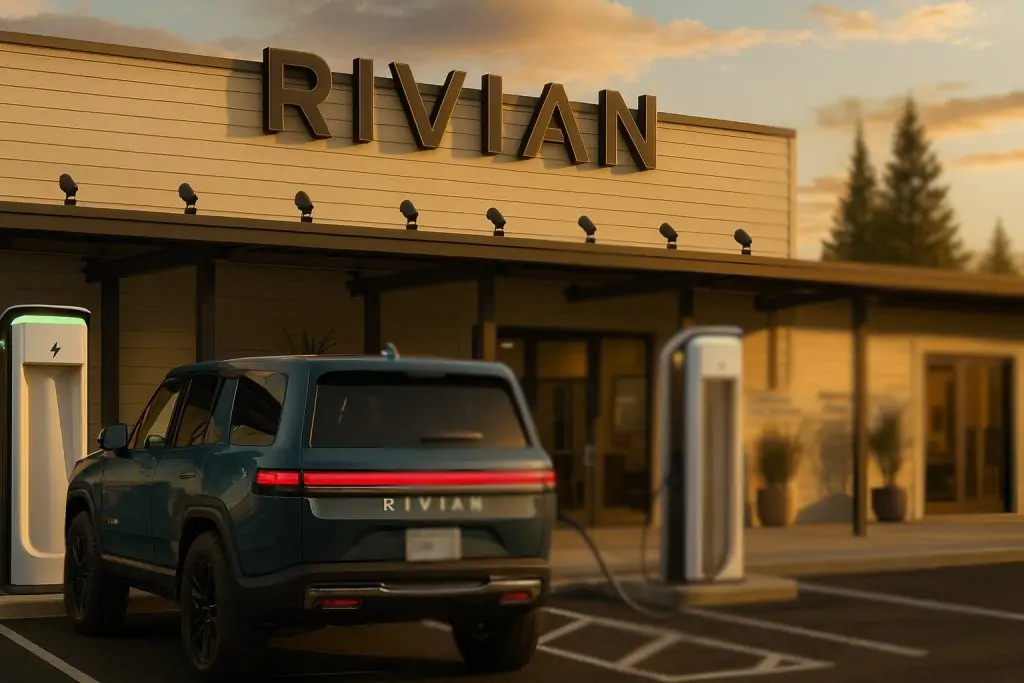Tesla (TSLA) stock edges higher on November 17, 2025 as Elon Musk accelerates a shift away from China-made parts, Peter Thiel slashes his stake, AI5 chip timelines slip, and analysts clash over robotaxi upside vs. “tough reality.”
- TSLA stock is trading around $414 in afternoon U.S. trading, up roughly 2–3% on the day, after a volatile week.
- Tesla is pushing suppliers to strip out all China-made parts from vehicles built in the U.S. within 1–2 years, accelerating a dual-supply-chain strategy amid new tariffs and geopolitical risk. [1]
- Billionaire Peter Thiel cut his Tesla position by over 75% in Q3, even as Elon Musk publicly warned short sellers – including Bill Gates – to get out of bearish bets. [2]
- Elon Musk says Tesla’s next‑gen AI5 chip won’t be available in “sufficient volume” until mid‑2027, delaying hardware upgrades central to robotaxis and Optimus. He also admits AI training spend hasn’t yet been the bottleneck for FSD but expects it to be for robots. [3]
- Wall Street is split: Stifel and TD Cowen have raised price targets to around $508–$509 on robotaxi and autonomy progress, while HSBC reiterates a “Reduce” rating and a $131 target, calling out a lofty P/E above 270x and a gulf between promises and current earnings. [4]
- Institutional flows are active on both sides: Nomura and other asset managers boosted stakes, while Root Financial and Westwood trimmed holdings. Overall, roughly two‑thirds of Tesla’s float is now institutionally owned. [5]
- Battery & regional narratives: Tesla extended its graphite supply deal with Syrah Resources to 2026, and a Reuters report highlights booming South American EV sales “without Tesla,” underscoring both supply‑chain and geographic gaps in the story. [6]
TSLA stock today: rebound after a choppy stretch
As of mid‑afternoon on November 17, 2025, Tesla shares trade near $414.46, up about 2.5% on the day, with intraday moves between roughly $397 and $415. Volume is elevated relative to normal sessions.
This bounce comes after a sharp pullback from recent 52‑week highs above $480, driven by:
- Concerns over recalls in Tesla’s energy business,
- Worries about execution risk on robotaxis and humanoid robots,
- And heavy scrutiny of the stock’s extreme valuation versus slowing auto earnings. [7]
At today’s price, multiple independent analyses still peg Tesla’s trailing P/E ratio well above 270x, far higher than traditional automakers — a key reason some analysts remain sharply cautious even as others lean into the AI and autonomy narrative. [8]
Tesla accelerates its U.S. decoupling from China-made components
One of the biggest strategic headlines today is Tesla’s aggressive move to insulate its U.S. manufacturing from China‑sourced parts.
According to reporting from Electrek, citing the Wall Street Journal, Tesla has instructed suppliers to remove all China‑made components from parts destined for U.S. factories. Key points: [9]
- Tesla earlier this year decided to stop using China‑based suppliers for cars built in the U.S., but that effort is now being pushed much harder.
- The company aims to switch the remaining China‑origin parts to alternative sources within 1–2 years.
- The shift accelerated after new U.S. tariffs on Chinese imports, creating cost volatility and planning uncertainty.
- Tesla is effectively running two separate supply chains:
- Giga Shanghai: heavily localized to more than 400 Chinese suppliers, feeding China, Europe and much of Asia.
- U.S. factories (Fremont & Texas): increasingly “firewalled” from Chinese components to qualify for U.S. incentives and avoid tariffs.
Electrek notes Tesla has been nudging Chinese suppliers to set up in Mexico and other non‑Chinese locations since the pandemic, but the new push “is more aggressive,” reflecting the reality of a deepening U.S.–China economic decoupling. [10]
Longer term, Tesla is also building its own LFP battery production capacity in Nevada, with initial output targeted at energy storage and potentially vehicles later on, as it hunts for non‑China sources of cheaper LFP cells. [11]
For investors, this matters because:
- It could reduce geopolitical and tariff risk, but
- It may increase near‑term costs and complexity, with Tesla essentially duplicating parts of its supply chain to serve different markets.
Peter Thiel slashes Tesla stake as Musk warns short sellers
Another headline grabbing attention this morning: Peter Thiel’s hedge fund, Thiel Macro LLC, has slashed its Tesla position by more than 75%.
Per Thiel’s latest Q3 13F filing, summarised by Electrek: [12]
- The fund sold 207,613 TSLA shares in Q3 2025,
- Cutting its stake from 272,613 shares to 65,000,
- A reduction of over 76% during the quarter.
The move is notable because Thiel is personally close to Elon Musk (co‑founding the original PayPal “mafia”). Yet, while Musk has told Tesla shareholders to “hold on to their stocks,” Thiel’s fund has been rotating out of high‑growth names, fully exiting Nvidia and shifting toward more traditional large‑cap tech such as Apple and Microsoft. [13]
At the same time, Musk has been escalating his rhetoric against short sellers:
- In a weekend post on X (formerly Twitter), addressing reports about Bill Gates’ long‑standing Tesla short, Musk wrote: “If Gates hasn’t fully closed out the crazy short position he has held against Tesla for ~8 years, he had better do so soon.” [14]
The optics for the market are mixed:
- On one side, insiders and long‑time bulls call for patience and warn shorts.
- On the other, prominent billionaire investors quietly de‑risk by dumping growth names, including Tesla.
AI roadmap: AI5 chip delay and Tesla’s AI training strategy
Beyond cars and supply chains, Tesla’s AI stack is central to today’s narrative.
AI5 chip pushed to mid‑2027
Over the weekend, Musk revealed that Tesla’s next‑generation AI5 (Hardware 5) chip will not be available in sufficient volume to switch production lines until mid‑2027. [15]
According to Benzinga’s summary of his comments:
- AI5 is designed to deliver a major step up in on‑board compute for FSD and robotics.
- Tesla needs “several hundred thousand” AI5 boards line‑side before it can fully convert vehicle production to the new hardware.
- Work on AI6 is already underway:
- Samples and limited units could appear in 2026,
- But volume AI6 production is only expected in 2028, with roughly 2x the performance of AI5. [16]
This stretches the timeline for when Tesla’s AI hardware ambitions will be fully realized in the mass‑market fleet.
“Training wasn’t the limiting factor” — so far
Separately, Musk responded today to criticism from famed short seller Jim Chanos over Tesla’s AI spending. In a Benzinga‑reported exchange on X, Musk agreed with investor Gavin Baker that Tesla customers effectively pay for most inference hardware inside the cars themselves, which reduces the need for massive external training spend compared to some AI peers. [17]
Musk added:
- Historically, AI training compute “wasn’t yet the limiting factor” for FSD.
- However, he expects training to become the bottleneck for Optimus, Tesla’s humanoid robot.
- Tesla is therefore building a new “Cortex 2” training supercomputer, specifically to handle Optimus‑scale workloads. [18]
Net effect: the AI narrative is alive and well, but timelines are stretching:
- Robotaxis and Optimus remain key pillars of the bull case,
- Yet hardware and training infrastructure will take years, not quarters, to fully deploy.
Battery materials: Syrah graphite deal extended
On the battery supply side, Tesla is working to lock in critical materials outside China.
A new item on Seeking Alpha’s news feed reports that Tesla has extended its graphite supply agreement with Australia’s Syrah Resources through 2026, and given Syrah until January to honor additional commitments under the deal. [19]
Why this matters:
- Graphite is a key anode material for EV batteries.
- Western automakers face mounting pressure to reduce dependence on Chinese graphite, as the U.S. tightens rules around foreign “entities of concern” in battery supply chains.
- Extending the Syrah deal suggests Tesla is doubling down on non‑China sources, consistent with its broader decoupling efforts in components and cells.
Institutional flows: Nomura boosts stake while others trim
Today’s flow data show a tug‑of‑war among professional investors.
Fresh support from Nomura and others
Teslarati reports that Nomura Asset Management has increased its Tesla position enough to make TSLA its 10th‑largest holding, representing about 1% of its overall portfolio. [20]
Additional 13F filings referenced in the same report show several wealth managers boosting Tesla stakes in Q3:
- Brighton Jones LLC raised its holdings by about 11.8%,
- Revolve Wealth Partners increased its TSLA position by 21.2%,
- Bison Wealth boosted its stake by more than 50%,
- Other institutional investors, including AMG National Trust Bank and FAS Wealth Partners, also added to positions. [21]
Combined with MarketBeat data, roughly 66% of Tesla’s outstanding shares are now held by institutional investors. [22]
Trimmed positions and insider selling
At the same time, some investors are quietly taking profits:
- Root Financial Partners cut its Tesla position by 8.7% in Q2,
- Westwood Holdings Group trimmed its stake by 24.1%, according to separate MarketBeat alerts. [23]
MarketBeat also highlights significant insider selling over the last three months:
- CFO Vaibhav Taneja sold thousands of shares,
- SVP Xiaotong Zhu and director James R. Murdoch also reduced holdings,
- In total, insiders have sold over 200,000 shares worth roughly $75 million, though insiders still control close to 20% of the company. [24]
Meanwhile, QuiverQuant’s data show 2,099 institutions added TSLA in their most recent quarter vs. 1,632 that reduced, and track Elon Musk’s own massive insider purchases — roughly $1 billion of stock in the past six months, reinforcing his skin in the game. [25]
Wall Street split: robotaxi optimism vs. “tough reality”
Today also brought a flurry of clashing analyst opinions.
Bullish: Stifel & TD Cowen lean into autonomy
- Stifel raised its Tesla price target from $483 to $508, maintaining a Buy rating, citing “strong progress” on FSD and the robotaxi roadmap. [26]
- TD Cowen reiterated a Buy rating and a $509 target, emphasizing confidence in Tesla’s autonomous vehicle (AV) capabilities following a recent mobility conference. [27]
QuiverQuant notes that across the last six months, 23 analysts have updated TSLA price targets, with a median target around $435—below today’s price but well above deep‑bear scenarios. [28]
Bearish: HSBC doubles down on a “Reduce” call
On the other side, HSBC reiterated its “Reduce” rating and a $131 price target this morning, flagging:
- A P/E ratio around 280x, far above automotive peers and even many megacap tech names.
- A 93% share‑price gain over two years, while 12‑month forward earnings estimates have more than halved over the same period.
- Ongoing weakness in Tesla’s core auto business, which they say has overshadowed progress in energy storage and other segments.
- The fact that Tesla’s pre‑revenue ventures — robotaxis, Optimus, AI services — have not yet scaled into sizable commercial businesses, despite dominating the narrative. [29]
HSBC’s note also references Tesla’s recent recall of about 10,500 Powerwall 2 home batteries in the U.S. over fire and burn hazards, following 22 overheating reports, which has drawn attention to Tesla’s energy segment and third‑party battery suppliers. [30]
Global context: South America’s EV boom is happening “without Tesla”
A Reuters piece published today zooms out to the global EV landscape, focusing on South America’s rapidly growing electric vehicle market. The punchline: Tesla so far plays almost no direct role there. [31]
Key nuggets:
- In Peru, early adopters who wanted a Tesla had to fly to California to test drive and then rely on workarounds to import vehicles, thanks to the lack of official Tesla presence and complex local import rules.
- Today, buyers can choose among a wave of Chinese EVs from brands like BYD, Geely, and GWM, often priced at about 60% of a comparable Tesla.
- Legacy automakers (Toyota, Kia, Hyundai and others) are also expanding EV offerings in the region.
- EVs remain a small but fast‑growing share of overall sales, suggesting a major growth runway that currently favors Chinese manufacturers, not Tesla.
For Tesla, the article is a reminder that global EV growth ≠ Tesla growth by default — especially in markets where the company lacks local infrastructure and regulatory pathways.
“Big promise vs. today’s reality”: the valuation debate
Underpinning all of this is a broader question: does Tesla’s current valuation fairly reflect its reality today or its hoped‑for AI future?
A new Seeking Alpha article titled “Tesla’s Big Promise Vs. Today’s Reality” argues that today’s share price already assumes major success in AI, FSD, and robotics, while the company is still grappling with:
- Declining auto margins,
- Slower earnings growth,
- High capital intensity for AI data centers, new chips, and new factories. [32]
Similarly, an investor letter from Aristotle Atlantic, highlighted by Insider Monkey, notes that despite three years of deteriorating auto fundamentals, the stock’s narrative has pivoted almost entirely to robotaxis and humanoid robots, even as those businesses are still pre‑revenue. [33]
On the other hand, bulls point to:
- Record energy‑storage deployments,
- The potential operating leverage from software‑like FSD subscriptions,
- And a long‑term robotaxi and robotics opportunity that, if it works, could be orders of magnitude larger than the existing auto business. [34]
What today’s news means in practical terms
Putting all of today’s headlines together:
- Strategically, Tesla is:
- Technologically, the company is:
- Pushing hard on AI hardware (AI5/AI6) but accepting a mid‑to‑late‑decade timeline for full deployment.
- Acknowledging that AI training will become a real capex constraint once Optimus scales, even if it hasn’t yet constrained FSD. [37]
- Financially & in the market:
- TSLA is still hugely popular with institutions, but there is meaningful profit‑taking and insider selling alongside big new buys. [38]
- Analysts are deeply divided, with some framing Tesla as a misunderstood AI platform and others calling out a “tough reality” where earnings haven’t kept pace with the hype. [39]
- Operationally, Tesla’s energy business is both an opportunity and a risk:
- Rapid growth in storage deployments,
- But also headline‑grabbing recalls that highlight quality control and supplier risk. [40]
Final note
Nothing here is investment advice — markets move quickly, and Tesla is one of the most volatile large‑cap names in the world. But for November 17, 2025, the picture is clear:
- Tesla remains at the center of the EV and AI conversation,
- The gap between its current fundamentals and its AI‑robotaxi dream is under sharper scrutiny than ever,
- And today’s news cycle shows a company simultaneously de‑risking supply chains, stretching its AI timelines, and polarizing Wall Street.
References
1. electrek.co, 2. electrek.co, 3. www.benzinga.com, 4. www.investing.com, 5. www.teslarati.com, 6. seekingalpha.com, 7. ca.investing.com, 8. ca.investing.com, 9. electrek.co, 10. electrek.co, 11. electrek.co, 12. electrek.co, 13. electrek.co, 14. electrek.co, 15. www.benzinga.com, 16. www.benzinga.com, 17. www.benzinga.com, 18. www.benzinga.com, 19. seekingalpha.com, 20. www.teslarati.com, 21. www.teslarati.com, 22. www.marketbeat.com, 23. www.marketbeat.com, 24. www.marketbeat.com, 25. www.quiverquant.com, 26. www.investing.com, 27. www.investing.com, 28. www.quiverquant.com, 29. ca.investing.com, 30. www.reuters.com, 31. www.reuters.com, 32. seekingalpha.com, 33. www.insidermonkey.com, 34. www.investing.com, 35. electrek.co, 36. seekingalpha.com, 37. www.benzinga.com, 38. www.teslarati.com, 39. www.investing.com, 40. www.reuters.com







